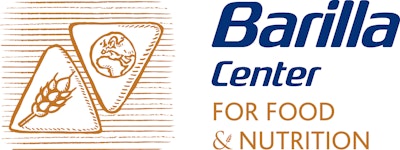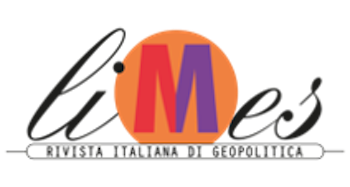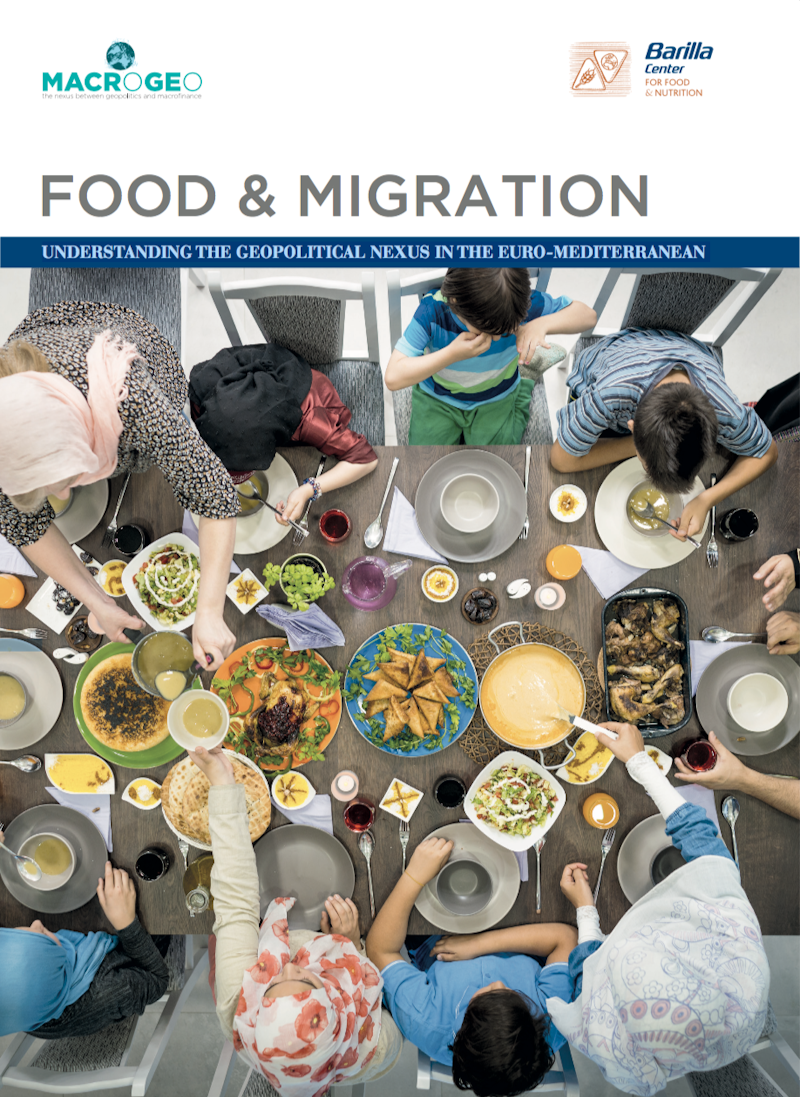References
Abulafia D. (2011). The Great Sea. Oxford University Press.
Antonelli M. et al. (2015). Global investments in agricultural land and the role of the EU: Drivers, scope and potential impacts, Land Use Policy Volume 47, September.
AfDB (2016). Analytical Fact Base on Economic Opportunity for Youth in Africa, Dalberg for African Development Bank.
AfDB/OECD/UNDP (2017). African Economic Outlook 2017.
Al-Sharafat A. (2016). Analyzing Farm Accounting Skills Related to Financial Performance of Dairy Industry: An Evidence from Jordan. Journal of Agricultural Science, 8(12), 174.
Amnesty International (2012). We Wanted Workers but We Got Humans Instead. Labour Exploitation of Agricultural Migrant Workers in Italy. London, October.
Arshinder K. et al. (2011). A review on supply chain coordination: coordination mechanisms, managing uncertainty and research directions. Supply chain coordination under uncertainty (pp. 39-82). Springer Berlin Heidelberg.
Baregheh A. et al. (2012). Food sector SMEs and innovation types, British Food Journal, Vol. 114 No. 11, pp. 1640-1653.
Barilla Center for Food and Nutrition (2009a). Position Paper The cultural dimension of food.
Barilla Center for Food and Nutrition (2009b). Position Paper Alimentazione e salute.
Barilla Center for Food and Nutrition (2016a). Fixing Food: Towards a More Sustainable Food System. The Economist Intelligence Unit (https://www.barillacfn.com/m/publications/bcfn-fixingfood.pdf).
Barilla Center for Food and Nutrition (2016b). Eating Planet. Food and Sustainability: Building our Future, Edizioni Ambiente.
Bell M., Pavitt K. (1992). Accumulating technological capability. The World Bank Annual Conference on Development Economics. World Bank, New York, pp. 257-281.
Belletti G. et al. (2017). Geographical indications, public goods, and sustainable development: The roles of actors’ strategies and public policies. World Development, 98, 45-57.
Beske P. et al. (2014). Sustainable supply chain management practices and dynamic capabilities in the food industry: A critical analysis of the literature. International Journal of Production Economics, 152:131–143 · June 2014 DOI: 10.1016/j.ijpe.2013.12.026.
Brachet J. et al. (2011). “Le Sahara entre espace de circulation et frontière migratoire
de l’Europe”, Hérodote 2011/3 (n° 142), 163-182.
Brzoska M., Fröhlich C. (2015). Climate change, migration and violent conflict: vulnerabilities, pathways and adaptation strategies, Migration and Development, DOI: 10.1080/21632324.2015.1022973
Caiazza R. et al. (2014), “Innovation in agro-food system: policies, actors and activities”, Journal of Enterprising Communities: People and Places in the Global Economy, Vol. 8 No. 3, pp. 180-187.
CBI (2017). Which trends offer opportunities on the European spices and herbs market? ( https://www.cbi.eu/market-information/spices-herbs/trends/ ).
Chesbrough H. et al. (2006). Open Innovation: Researching a New Paradigm, Oxford University Press, Oxford.
Collier, P. (2013). Exodus: how migration is changing our world. Oxford University Press.
Cotula L. et al. (2009). Land grab or development opportunity? Agricultural investment and international land deals in Africa, IIED, FAO, IFAD.
De Haas H. (2010). Migration transitions: a theoretical and empirical inquiry into the developmental drivers of international migration, Paper 24. Oxford: International Migration Institute-University of Oxford.
De Pee S. et al. (2017). Nutrition and health in a developing world. Third edition. Humana Press, Rome.
Deakins D. et al. (2016). Entrepreneurial skill and regulation: Evidence from primary sector rural entrepreneurs. International Journal of Entrepreneurial Behavior & Research, 22(2), 234-259.
Deloitte (2015). Reducing Food Loss Along African Agricultural Value Chains. https://www2.deloitte.com/content/dam/Deloitte/za/Documents/consumer-business/ZA_FL1_ReducingFoodLossAlongAfricanAgriculturalValueChains.pdf
Devillard A. et al. (2015). A Survey on Migration Policies in West Africa, ICMPD and IOM. Vienna-Dakar: March.
Di Paola A. et al. (2017). Human food vs. animal feed debate. A thorough analysis of environmental footprints. Land Use Policy, 67: 652-659. 10.1016/j.landusepol.2017.06.017.
Dijkshoorn H. et al. (2003). [Prevalence of diabetes mellitus and cardiovascular disease among immigrants from Turkey and Morocco and the indigenous Dutch population]. Nederlands tijdschrift voor geneeskunde. 147.
Drucker P. (2014). Innovation and entrepreneurship. Routledge.
Ericksen P.J. et al. (2009). Food security and global environmental change: emerging challenges. Environmental Science & Policy, Volume 12, Issue 4, June 2009, Pages 373-377.
fDi Markets (2016). The Africa Investment Report 2015.
Food and Agriculture Organization (2014a). The Water-Energy-Food Nexus. A new approach in support of food security and sustainable agriculture. FAO, Rome.
Food and Agriculture Organization (2014b). The State of Food and Agriculture: Innovation in family farming. Rome.
Food and Agriculture Organization (2014c). Developing sustainable food value chains – Guiding principles. Rome.
Food and Agriculture Organization (2016). Addressing rural youth migration at its root causes: a conceptual framework. In Rural Development FAO, Rome.
Food and Agriculture Organization (2017a). FAO and the SDGs: Indicators - Measuring up to the 2030 Agenda for Sustainable Development.
Food and Agriculture Organization (2017b). The future of food and agriculture. Trends and challenges.
FAO, IFAD, UNICEF, WFP and WHO (2017) The State of Food Security and Nutrition in the World 2017.Building resilience for peace and food security.
Galbete C. et al. (2017). Food consumption, nutrient intake, and dietary patterns in Ghanaian migrants in Europe and their compatriots in Ghana. Food Nutr Res. 61(1).
Garnsey P. (1983). Grain for Rome, in Peter Garnsey P., Hopkins K., Whittaker C. R., Trade in the Ancient Economy, University of California Press.
Gholap N. et al. (2011). Type 2 diabetes and cardiovascular disease in South Asians. Prim Care Diabetes. 2011 Apr; 5(1):45-56.
González Turmo I. (2012), Chapter 5. The Mediterranean Diet: consumption, cuisine and food habits, in CIHEAM, MediTERRA 2012 (english), Presses de Sciences Po (P.F.N.S.P.) « Annuels », p. 115-132.
GRAIN (2012). Squeezing Africa Dry: Behind every land grab is a water grab, June.
Graham A. et al. (2010). The impact of Europe’s policies and practices on African agriculture and food security: Land grab study, FoodFirst Information Action Network.
Grecequet M. et al. (2017). Climate Vulnerability and Human Migration in Global Perspective. Sustainability 9 (5): p. 720. DOI:10.3390/su9050720.
Gustavsson J. et al. (2011). Global Food Losses and Food Waste: Extent, Causes and Prevention, Rome, FAO.
Hamid M (2017). Exit West. Riverhead Books.
Han J. et al. (2013). The impact of supply chain integration on firm performance in the pork processing industry in China, Chinese Management Sciences 7(2), 230–252.
Handayati Y. et al. (2015). Agri-food supply chain coordination: the state-of-the-art and recent developments. Logistics Research, 8(1), 5.
Hawkes C., Ruel M.T. (2012). Value chains for nutrition. Reshaping agriculture for nutrition and health, 73-82.
HLPE (2014). Food Losses and Waste in the Context of Sustainable Food Systems, Rome, High Level Panel of Experts on Food Security and Nutrition (HLPE) of the Committee on World Food Security.
Hobbs J.E. et al. (2000). Value chains in the agri-food sector, Department of Agricultural Economics, University of Saskatchewan, Saskatoon, Canada.
Hsiang S.M, et al. (2013). Quantifying the Influence of Climate on Human Conflict. Science, 341:1235367.
IEMed (2017). Mediterranean Yearbook 2017. Available at: http://www.iemed.org/publicacions/historic-de-publicacions/anuari-de-la-mediterrania/sumaris/iemed-mediterranean-yearbook-2017.
IOM (2014). Migration, Environment and Climate Change: Evidence for Policy (MECLEP).
IFAD (2017). Sending Money Home: Contributing to the SDGs, one family at a time.
IMF (2017). World Economic Outlook: A Shifting Global Economic Landscape, International Monetary Fund, Washington, DC.
International Land Coalition (2011). Tirana Declaration: “Securing land access for the poor in times of intensified natural resources competition”.
IOM (2017). Global Migration Trends factsheet 2015. Geneva.
IPCC (2012) Managing the Risks of Extreme Events and Disasters to Advance Climate Change Adaptation. A Special Report of Working Groups I and II of the Intergovernmental Panel on Climate Change [Field, C.B., V. Barros, T.F. Stocker, D. Qin, D.J. Dokken, K.L. Ebi, M.D. Mastrandrea, K.J. Mach, G.-K. Plattner, S.K. Allen, M. Tignor, and P.M. Midgley (eds.)]. Cambridge University Press, Cambridge, UK, and New York, NY, USA, 582 pp
IPCC (2014) Climate Change 2014: Impacts, Adaptation, and Vulnerability. Contribution of Working Group II to the Fifth Assessment Report of the Intergovernmental Panel on Climate Change. Cambridge University Press, Cambridge, United Kingdom and New York, NY, USA.
Juma C. (2011). “Africa Can Feed Itself in a Generation.” Policy Brief, Science, Technology, and Globalization Project, Belfer Center, January.
Juma C. (2015). The New Harvest, Oxford University Press.
Kahan D. (2012). Entrepreneurship in farming. FAO, Rome.
Kamanori M.G., Pullum T. (2013). Indicators of Child Deprivation in Sub-Saharan Africa, DHS Comparative Reports n. 32, ICF International, Calverton, Maryland.
Kachika T. (2010). Land Grabbing in Africa: A Review of the Impacts and Possible Policy Responses, Oxfam.
Kissoly L. et al. (2017). The integration of smallholders in agricultural value chain activities and food security: evidence from rural Tanzania, Food Security.
Knickel K. et al. (2009). Towards a Better Conceptual Framework for Innovation Processes in Agriculture and Rural Development: From Linear Models to Systemic Approaches. Journal of Agricultural Education and Extension 15 (2): 131–146 doi:10.1080/13892240902909064.
Kohl I. (2013). Afrod, le business touareg avec la frontière : nouvelles conditions et nouveaux défis. Politique Africaine 132.
Kraemer R. A. (2017). The G20 and Building Global Governance for “Climate Refugees”, Centre for International Governance Innovation.
Krishnamurthy P. K. et al. (2014). A methodological framework for rapidly assessing the impacts of climate risk on national-level food security through a vulnerability index. Global Environmental Change, 25, 121-132.
Kwon D. Y. (2015). Why ethnic foods? Journal of Ethnic Foods, Volume 2 , Issue 3 , 91
Lewis L. (2013). Rural and Urban Water Issues in Africa, The Water Project.
Lachman D.A. (2013). A survey and review of approaches to study transitions. Energ Policy, 58 (2013), pp. 269-276, 10.1016/j.enpol.2013.03.013.
Larsen K. et al. (Eds.) (2009). Agribusiness and innovation systems in Africa. World Bank Publications.
Livi Bacci M. (2015) “La Quarta Globalizzazione”, Limes 6/2015.
Lucas R. (Ed.) (2014). International Handbook on Migration and Economic Development, Edward Elgar Publishing.
Lundqvist J. et al. (2008). Saving Water: From Field to Fork: Curbing Losses and Wastage in the Food Chain”, SIWI Policy Brief, Stockholm, Stockholm International Water Institute (SIWI) (https://center.sustainability.duke.edu/ sites/default/files/documents/from_field_to_fork_0.pdf).
Van Dijk M.P. (2016). Is China grabbing land in Africa? A literature overview study, Contribution to the Landac conference Utrecht, June 30.
Mäkinen H. (2013). Farmers’ managerial thinking and management process effectiveness as factors of financial success on Finnish diary farms. Agriculture and Food Science, (2013) 22: 452-465.
Malakooti A. et al. (2015). Irregular Migration Between West Africa, North Africa and the Mediterranean. Paris-Abuja: Altai Consulting.
Martí I., Mair J. (2008). Bringing change into the lives of the poor: Entrepreneurship outside traditional boundaries, In Institutional Work. Edited by Lawrence, T., R. Suddaby and B. Leca, Spring. Cambridge University Press.
Mathu K., Tlare M.T. (2017). The impact of IT adoption in SMEs supply chains: A case of Gauteng and Free State provinces of South Africa. South African Journal of Business Management, 48(3), 63-71.
Medici Senza Frontiere (2008). Una Stagione all’Inferno.
Mbogo, M., (2011). Influence of Managerial Accounting Skills on SME’s on the Success and Growth of Small and Medium Enterprises in Kenya. Journal of Language, Technology & Entrepreneurship in Africa, Vol. 3, No. 1.
Mekonnen M.M., Hoekstra A.Y. (2010) The green, blue and grey water footprint of farm animals and animal products, Value of Water Research Report Series No.48, UNESCO-IHE.
Menozzi D. et al. (2015). Farmer’s motivation to adopt sustainable agricultural practices. Bio-based and Applied Economics 4(2): 125-147, 2015.
Milan Center for Food and Law Policy (2017). Best Practices against Work Exploitation in Agriculture.
National Population Commission [NPC] Nigeria and ICF International (2014). Nigeria Demographic and Health Survey 2013. Abuja, Nigeria, and Rockville, Maryland, USA.
Nawrot K.A. et al. (2017). African Megacities as Emerging Innovation Ecosystems, Harvard Kennedy School RWP17-031, August 2017.
OECD/ATAF/AUC (2016). Revenue Statistics in Africa.
OECD/SWAC (2014). An Atlas of the Sahara-Sahel: Geography, Economy and Security, West African Studies, Paris, OECD Publishing.
Holmboe-Ottesen G., Wandel M. (2012). Changes in dietary habits after migration and consequences for health: a focus on South Asians in Europe. Food Nutr Res. 56.
Palumbo L., Sciurba A. (2015). Vulnerability to Forced Labour and Trafficking: The case of Romanian women in the agricultural sector in Sicily, Anti-Trafficking Review, issue 5, pp. 89–108.
Parisi Presicce C., Rossini O. (2015). Nutrire l’impero. Storie di alimentazione da Roma e Pompei, L’Erma di Bretschneider, 2015.
Porter M.E. (1986). Competition in global industries. Boston: Harvard Business School Press.
Porter M.E., Kramer M.R. (2011). Creating Shared Value: How to Reinvent Capitalism and Unleash a Wave of Innovation and Growth. Harvard Business Review, 89(1/2), January-February, pp. 62-77.
Practices on African Agriculture and Food Security (2011). FIAN International.
Ray D. K. et al. (2015). Climate variation explains a third of global crop yield variability. Nat Commun, 6, 5989.
Riccaboni A., Giovannoni E. (2005). L’innovazione organizzativo-gestionale: requisiti e criticità, in Riccaboni A., Busco C., Maraghini M.P., (2005) L’innovazione in azienda, (a cura di) Cedam, Padova.
Ronco P. et al.. (2017). A risk assessment framework for irrigated agriculture under climate change. Advances in Water Resources, in press.
Rundgren G. (2016). Food: from commodity to commons. J. Agric. Environ. Ethics, 29 (2016), pp. 103-121, 10.1007/s10806-015-9590-7
Sachs, J.D. (2006). The End of Poverty. Penguin Books.
Saka M., Galaa S. Z. (2016). Relationships between Wasting and Stunting and their concurrent Occurrence in Ghanaian Preschool Children, Journal of Nutrition and Metabolism, https://www.ncbi.nlm.nih.gov/pmc/articles/PMC4917721/
Scheele J. (2012). Smugglers and Saints of the Sahara: Regional Connectivity in the Twentieth Century. Cambridge: Cambridge University Press.
Scheidel W. et al. (2012). ORBIS: The Stanford Geospatial Network Model of the Roman World. Stanford University, http://orbis.stanford.edu/orbis2012/ORBIS_v1paper_20120501.pdf
SCHUB International (2013). The Official Supply Chain Dictionary: 8000 Researched Definitions for Industry Best-Practice Globally.
Simatupang T.M., Sridharan R. (2002). The Collaborative Supply Chain. The International Journal of Logistics Management, Vol. 13 Issue: 1, pp. 15-30, https://doi.org/10.1108/09574090210806333
Singh G.K., Miller B.A. (2004). Health, Life Expectancy, and Mortality Patterns Among Immigrant Populations in the United States. Canadian journal of public health. Revue canadienne de santé publique. 95. I14-21.
Smil V. (2004). Improving Efficiency and Reducing Waste in our Food System”, Environmental Sciences, 1 (1), pp. 17-26.
Kachica T. (2011). Land Grabbing in Africa: A Review of the Impacts and Possible Policy Responses, Oxfam.
TMP Systems & Rights and Resources Initiative (2017). Tenure and Investment in Africa: Comparative Analysis of Key Trends and Contextual Factors.
Touboulic A. et al. (2014). Managing Imbalanced Supply Chain Relationships for Sustainability: A Power Perspective. Decision Sciences 45(4) August 2014.
Touboulic A., Walker H. (2015). Love me, love me not: a nuanced view on collaboration in sustainable supply chains. Journal of Purchasing and Supply Management, 21(3), 178-191.
UN (2016). International Migration Report 2015. Highlights. New York.
UN-Water/UNESCO (2016). Water and Jobs — The United Nations World Water Development Report 2016.
UN G.A. (2015). Transforming our world: The Agenda 2030. For sustainable development. A/RES/70/1, 21 October.
UNCTAD (2016). World Investment Report 2016.
UNDP (2015), Human Development Report 2015.
Vandenheede H. et al. (2012). Migrant mortality from diabetes mellitus across Europe: the importance of socio-economic change. Eur J Epidemiol. 2012 Feb; 27(2):109-17.
Varsei M. et al. (2014). Framing sustainability performance of supply chains with multidimensional indicators. Supply Chain Management: An International Journal, Vol. 19 Issue: 3, pp. 242-257, https://doi.org/10.1108/SCM-12-2013-0436.
Venkat K. (2011). The Climate Change and Economic Impacts of Food Waste in the United States. International Journal of Food System Dynamics, 2 (4), pp. 431-446.
Vermeir I., Verbeke W. (2008). Sustainable food consumption among young adults in Belgium: theory of planned behavior and the role of confidence and values. Ecol. Econ. 64 (3), 542–553.
Vigani M. et al. (2015). Food and feed products from micro-algae: Market opportunities and challenges for the EU. Trends in Food Science & Technology, 42(1), 81-92.
Wanner P. et al. (1995). Habitudes de vie et comportements en matière de santé des immigrés de l’Europe du Sud et du Maghreb en France (Lifestyle and health behaviour of southern European and North African immigrants in France). Rev Epidemiol Sante Publique 43.
Water footprint network (2017) http://waterfootprint.org/en/water-footprint/product-water-footprint/water-footprint-crop-and-animal-products/
Willard B. (2012). The new sustainability advantage: seven business case benefits of a triple bottom line. New Society Publishers.
World Bank (2016a). Africa’s Pulse: An Analysis of Issues Shaping Africa’s Economic Future, No. 14, 2016.
World Bank (2016b). Migration and remittances data.
World Food Program (2017). At the root of the Exodus: Food Security, Conflict and International Migration.
WHO/UNICEF Joint Monitoring Programme. http://www.who.int/water_sanitation_health/monitoring/jmp-2015-key-facts/en/
World Health Organization (2016a). Micronutrient Deficiencies, Geneva, World Health Organisation (WHO) (www.who.int/nutrition/topics/ida/en/).
World Health Organization (2016b). Global Report on Diabetes.


